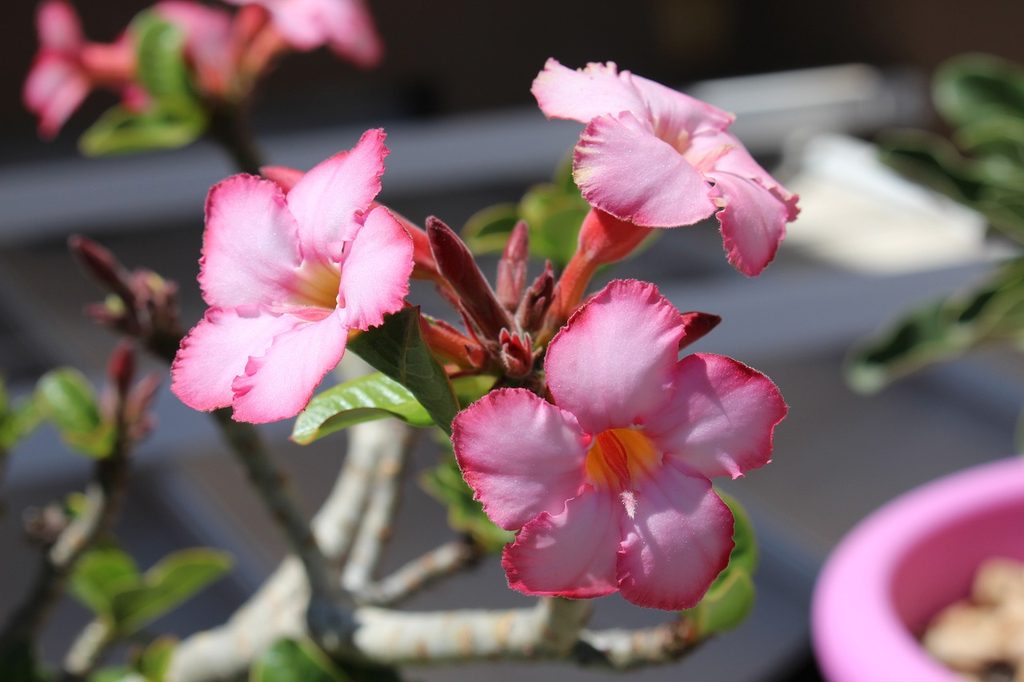
Does your houseplant collection need a stunning new addition? Why not try growing a desert rose? Adenium obesum is a beautiful drought-tolerant flower from the dogbane family. Native to parts of Africa and Asia, this plant’s vibrant flowers and relatively small size when grown in containers make it a wonderful and uncommon houseplant. Curious about growing your own? This guide will walk you through everything you need to know about keeping your desert rose happy and healthy.
Planting desert rose
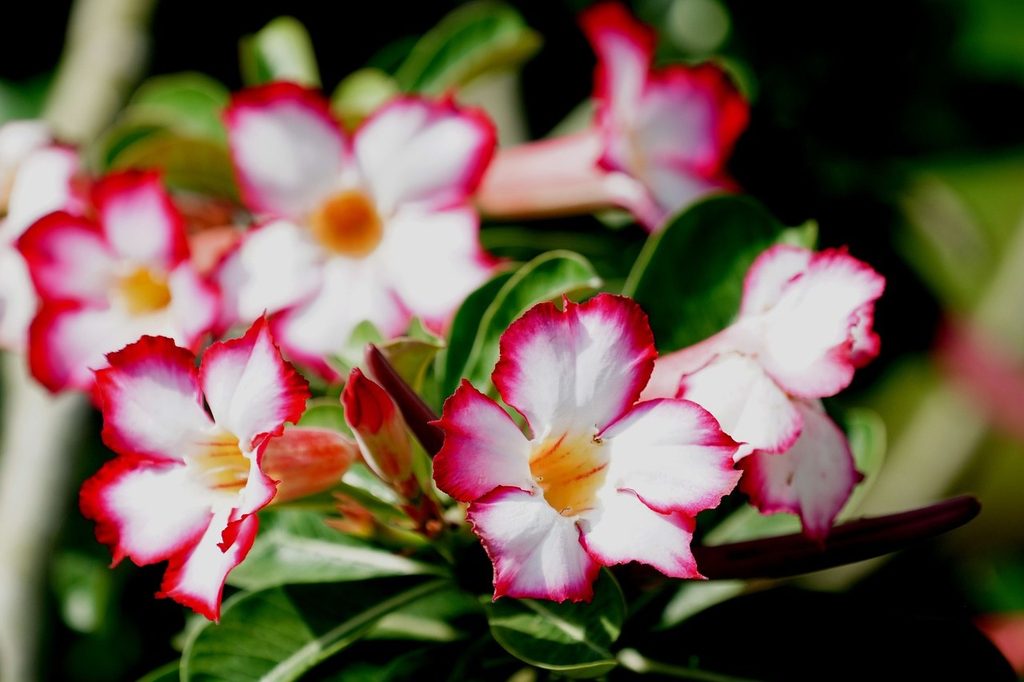
Desert roses can grow in traditional gardens or in containers, but they are better suited to containers in most parts of the U.S. They prefer warm weather and are sensitive to the cold. Growing your desert rose in a container allows you to bring it indoors during winter to keep it safe and warm.
Desert roses can tolerate some shade, but they typically do best in full sun. This is especially true for indoor desert rose plants. Well-draining soil is essential for growing desert roses, as they cannot tolerate wet feet. Potted desert rose flowers should be planted in cactus or succulent potting mix for the best results.
Be sure to choose a container with proper drainage holes as well. Desert roses grow slowly, and while they can grow several feet tall when planted outdoors, they typically stay small when grown in containers. Pick a container that is a little larger than the roots of the desert rose plant.
Desert rose care
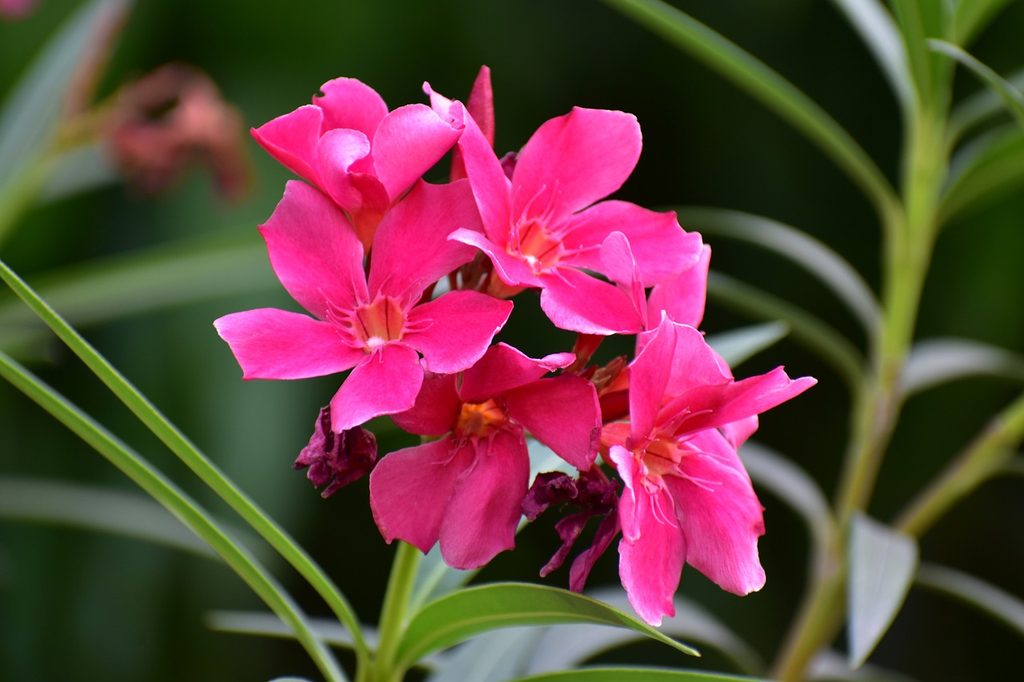
An important part of desert rose plant care is careful watering. They are sensitive to overwatering, so let your desert rose dry out in between waterings. Depending on the conditions in your home and how much water you give it at a time, this could mean watering your desert rose every few days or every other week. Desert roses are quite drought tolerant, so don’t panic if you miss a few waterings. During late fall through winter, when your desert rose is dormant, water it less often.
Fertilize your desert rose lightly in spring and summer with a balanced fertilizer. Spring and summer are also ideal times to repot your desert rose if it is beginning to outgrow the container. Due to their slow growth, desert roses don’t need frequent repotting. Pruning can help your desert rose stay small and grow more branches. Pruning a desert rose is similar to pruning a shrub: Focus on branches that are overlapping, damaged, diseased or too long. Prune your desert rose in late winter or early spring.
Common problems to avoid
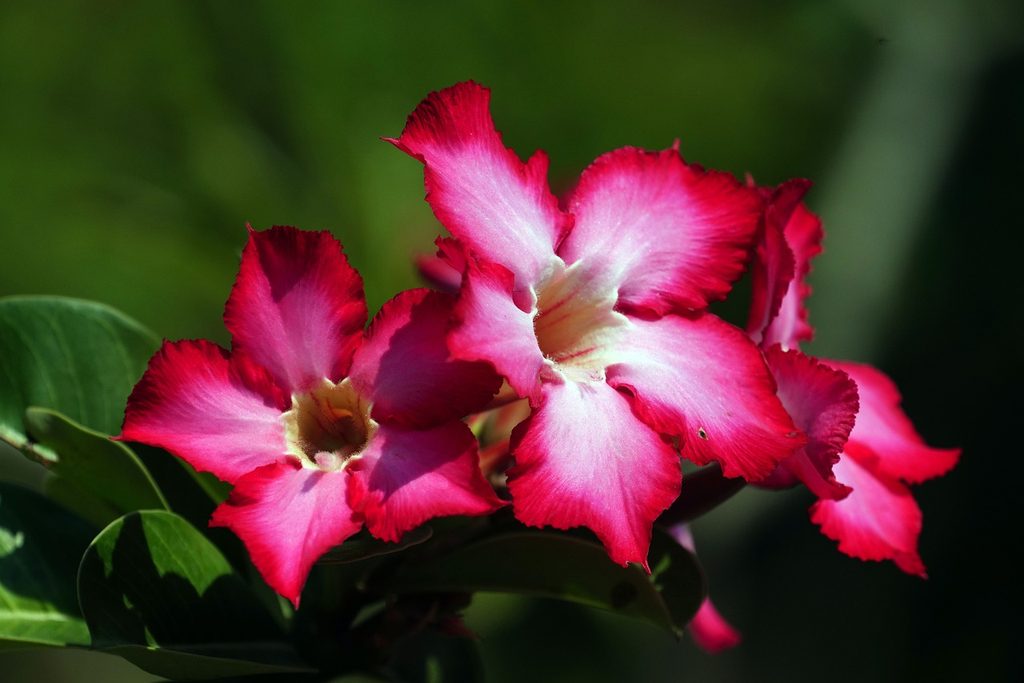
Common garden pests can bother desert roses, although the damage is typically not severe unless infestations are large. Spider mites, aphids, and mealybugs are a few of the most common culprits. Luckily, they’re also easy to control. You can use an insecticidal soap or neem oil to get rid of them, but dusting your plant will also help keep their population down. Small pests like these thrive in dry air, so keep your desert rose away from air vents that blow dry air onto the leaves.
Overwatering is a much larger problem with desert roses. If they are watered too often or planted somewhere without proper drainage, they can easily develop health issues. Root and stem rot are two such issues. Powdery mildew, leaf spot, and other fungal infections can develop as well. While some fungal infections can be treated, it is usually easier to avoid or prevent them. If the soil is still damp, don’t water your desert rose.
Are desert roses poisonous?
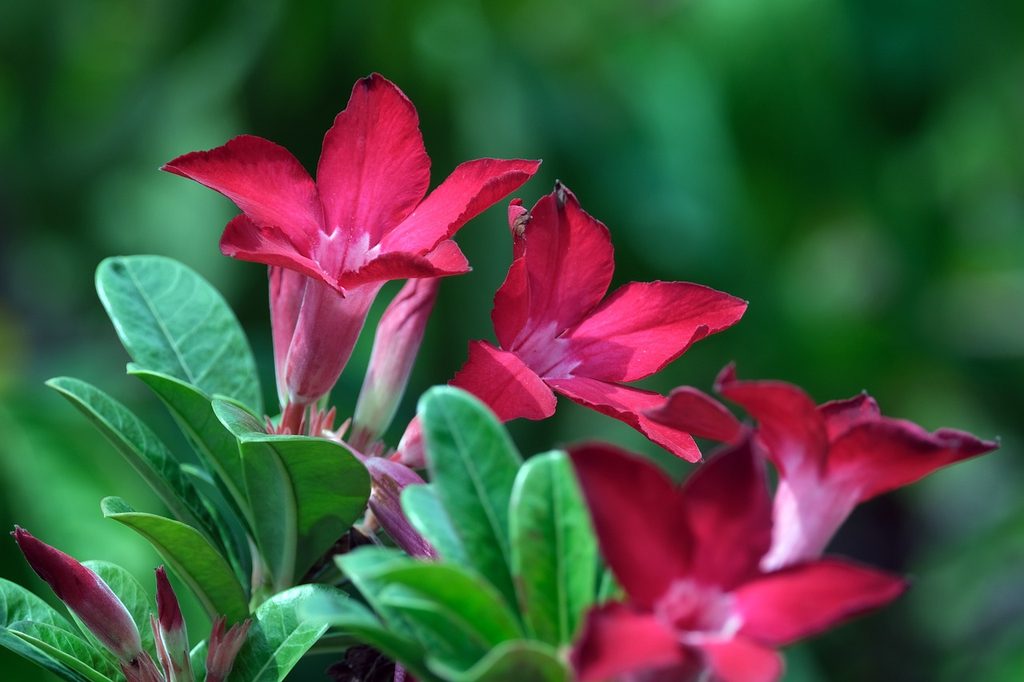
Yes, desert roses are poisonous for pets and people. They contain compounds known as cardiac glycosides, which are carried in the sap throughout the plant. Skin contact can result in irritation, so it’s best to wear gloves and long sleeves when caring for your desert rose. However, licking, chewing, or eating the plant can be seriously dangerous.
If you have pets or young children in your home who might be curious about your desert rose, keep the plant out of reach or in an inaccessible area. Contact a medical professional if you suspect a pet or person has ingested part of your desert rose. Symptoms of desert rose poisoning include drooling, upset stomach, lethargy, dizziness, and a slow heartbeat.
Desert roses are beautiful flowers with striking colors and require shockingly little regular care. Now you’re prepared to bring this lovely flower home with you. Keeping your desert rose happy and healthy is fairly simple once you know what to do. Be careful when watering it, keep an eye out for pests, prune it occasionally, and make sure it’s out of reach of pets and children.


